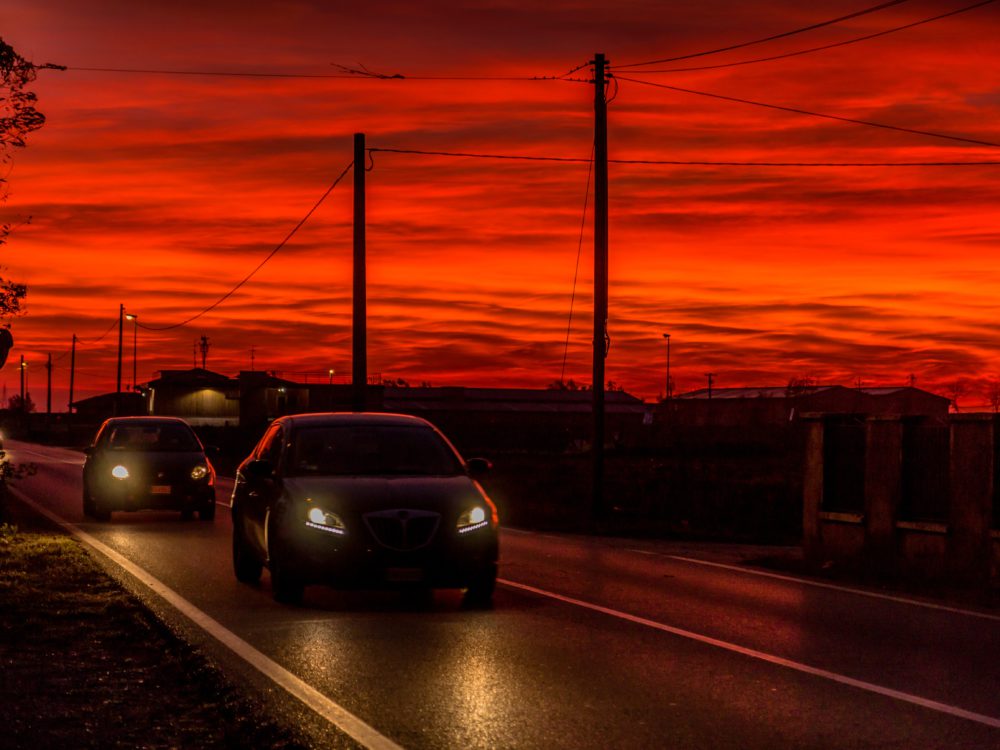As well as the bunting, street parties and drizzle, the recent jubilee involved an awful lot of looking back to the 1950s. Carried along on this wave of nostalgia, we’ve been thinking about how much Britain’s roads have changed since the coronation – and what driving will look like another 70 years into the future.
So, buckle up and join us on a journey through the mists of time.
How has driving changed since the 1950’s?
Traffic
The population of the country has gone up by the best part of 20 million people since 1953. But that’s nothing compared to the traffic boom. At a little north of 40 million, there are ten times the number of cars on the streets of Britain than there were on coronation day.
Costs
Adjusted for inflation, most cars in the early 50s weren’t all that more expensive than new models today, but the cost of ownership was certainly lower. In real terms, petrol was much, much cheaper (and that would be the case even without the big recent spike in fuel prices).
Infrastructure
Cars may have been cheaper to run in the past, but they weren’t as useful. That’s not so much because they lacked gadgets like satellite navigation. It’s simply that there weren’t so many roads to navigate. The first stretch of motorway wasn’t built until ‘58, so getting across the country in ‘53 would have taken a bit of doing.
Rules of the road
Driving could be a hassle in ‘53. But if you fancied a stiff drink to prepare yourself for the challenge, that was fine. Legally, anyway. Back then, there was no drink drive limit and no obligation to use a seat belt either. Thankfully, there was a speed limit – 30mph on any road considered to be in a ‘built up area’ (which basically meant anywhere with lighting).
Insurance
Just like today, mid-century drivers needed to have at least third party cover. Unfortunately, smart solutions like our pay-by-mile cover were way off.
As you may know, we base our pricing on how far you drive, rather than how you drive. But, interestingly, if we were interested in doing that kind of ‘driving score’ style insurance, the tech to do it was actually available in 1953 – as you can see in this quaint little news reel.
What will driving be like in the future?
Today’s roads are almost unrecognisable compared to those of the early 1950s. And it’d be pretty wild to assume they’ll be anymore familiar 70 years into the future. So, when we gaze into our crystal ball what do we see for the future of driving?
Fuel
The Government already has firm plans to block the sale of new petrol and diesel cars by 2030, so it feels like a pretty easy prediction to say that there’ll be none left on our roads by 2090 (except perhaps for a few well-maintained models that’ll be considered be classics by then). With better performing batteries potentially just around the corner, these cars will be able to get much further than on a single charge – and charging bays so widely available, running out of juice won’t be anything particularly worrying.
Usage-based tax
We’ve been asking for this for years – so hopefully we won’t be left waiting until the 2090’s. The fact is, the move to electric vehicles will certainly transform the way drivers are taxed. Because, if rules stayed the way they are now, the electric revolution would leave a big hole in the Government’s revenue. So, a tax-system where drivers pay based on how much they actually use the roads would definitely make most sense.
Connected cars
Today’s smart cars already offer connectivity with a range of services (including our pay-by-mile insurance). So it won’t take anything like 70 years for these features to become commonplace. Cars will be talking to the rest of your digital life, serving up tailored entertainment (and, inevitably targeted ads). But they’ll also be talking to each other, and potentially the roads themselves – sharing real time data to avoid accidents and congestion.
Drivers
Realistically, wide scale fully automated driving isn’t something we see taking off just around the corner. We’re still a good few iterations away from truly autonomous cars being a mainstream consumer product. Over the next few years, they’ll become more common in niche industrial settings – but there’ll still be plenty of kins to iron out before they’re ready for mass use in public spaces, which are generally a lot more chaotic.
But 70 years is a long time. In tech, it’s basically an eternity. So driving in the future will probably involve a lot less actual driving. By 2090, we imagine a very large chunk of the driving on Britain’s roads will be handled by AI. And that’ll massively change how insurance works…

Insurance
If cars often drive themselves, even people who spend a lot of time on the road will technically be low mileage drivers. They’ll want insurance that’s smart enough to tell when they’re driving and when their car is – and to only charge for the miles where they’re actually liable.
That means insurers will have to be able to talk to connected cars in real time, and make dynamic adjustments to their pricing. Fortunately for us, we’ve already got both of those things down.
If you’re already a low mileage driver, you don’t need to wait to benefit from a smarter kind of insurance. Our pay-by-mile policies could help you save right in the here and now. So why not get a quote?




